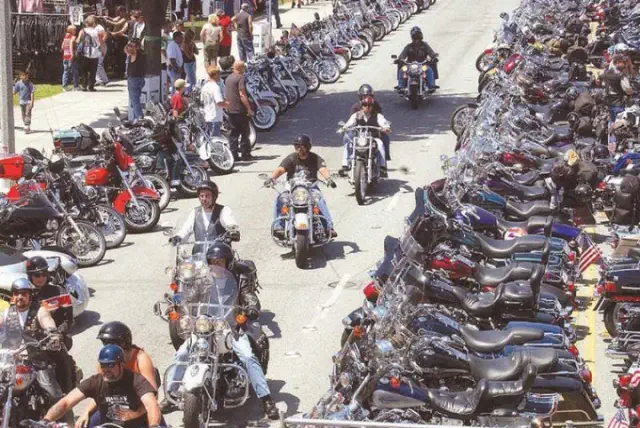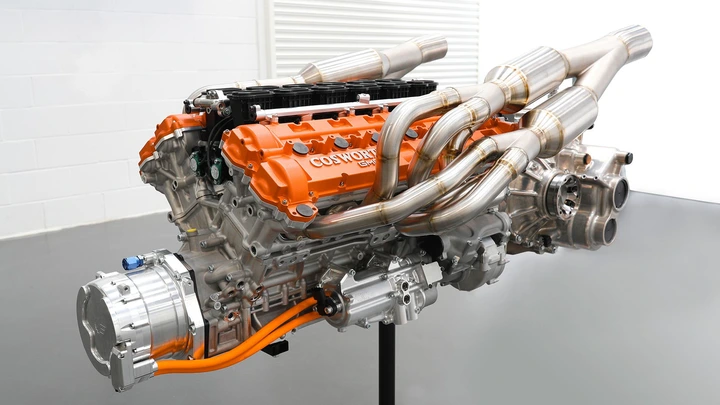
View pictures in App save up to 80% data.
Engines with high redlined allow them to produce more power by maintaining peak output over a broader range. This makes them deal with spirited driving and track use. Generally, engines with high redlines are often more responsive, have a shorter stroke, and are built of lightweight materials which help achieve the feat. In the V8 era of Formula 1, for example, the Ferrari engines could rev up to a staggering 20,000 rpm!
However, high-revving engines demand advanced engineering, making them expensive to develop and maintain. Additionally, they generally offer their peak performance high up in the rev range, meaning they lack low-end torque, making them largely impractical for daily use.
Some hypercars are not generally designed for daily use but rather built for purpose, that employ high-revving engines for on-track performance. As automakers chase 0-60 mph times, quarter-mile times, and top speed records for road cars, we attempted to find and highlight the highest-revving engine ever used in a production car in history.
The GMA T.50 V12 engine reaches an impressive maximum of 12,100 RPM.
GMA T.50 V12发动机规格
| Manufacturer |
Cosworth |
| Displacement |
3.9-Liter |
| Configuration |
Naturally Aspirated V12 |
| Power |
654–725 hp |
| Torque |
344-358 lb-ft |
| Redline |
12,100 rpm |
| Transmission |
6-speed Xtrac H-pattern manual |
| Drivetrain |
Rear-Wheel-Drive |
| 0-60 MPH |
2.8 seconds |
| Top Speed |
226 mph |
Origin: Gordon Murray Automotive
Gordon Murray, the designer of the McLaren F1, revealed the GMA T.50, a spiritual successor to the fastest naturally aspirated production car ever. Like the F1, the T.50 uses a naturally aspirated V12 engine that produces around 654 hp and 344 lb-ft of torque. Its lightweight construction means the engine only weighs 392 lbs. The V12 was developed in collaboration with British engineering company–Cosworth, who also helped build the V12 for the Aston Martin Valkyrie and the V16 engine for the new Bugatti Tourbillon.
This 3.9-liter naturally aspirated V12 engine in the GMA T.50 revs to a staggering 12,100 rpm, which makes it the highest-revving engine ever used on a production car. The engine runs an extremely high 14:1 compression ratio and features individual throttle bodies. Furthermore, a throttle response time of just 28 milliseconds is the fastest of any road car engine in the world.
The V12 is mated to a mechanical 6-speed manual Xtrac gearbox, with the gearing tailored for top speed, rather than acceleration. Despite that, the T.50 claims it can reach 60 mph in 2.8 seconds, and a top speed of 226 mph. GMA also has a track version called the T.50s Niki Lauda, which offers an aggressive aerodynamic package, while offering more engine performance – 725 hp and 358 lb-ft of torque. The track-focused T.50s Niki Lauda spec car drops weight by 295 lbs, giving the car a weight of under 900kg (1984 lbs). The enhanced aero-package helps the T.50s Niki Lauda generate up to 2,645-3,306 lbs of downforce. Gordon Murray will sell each T.50s Niki Lauda spec car for an estimated $3.9 million.
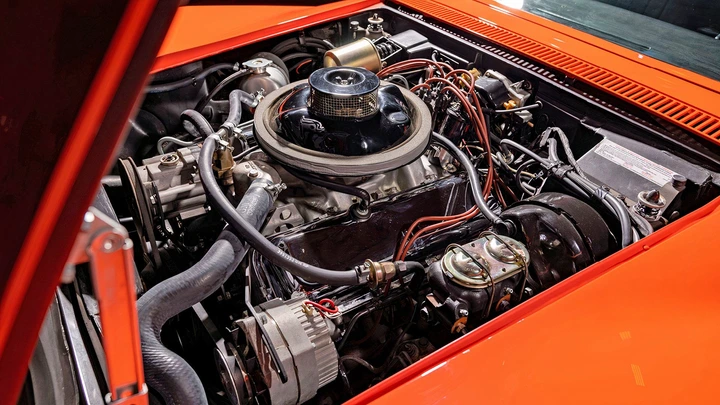
View pictures in App save up to 80% data.
This remarkable alloy big block engine is renowned for its impressive power output, along with its ability to reach significantly higher RPMs compared to other V8 engines of its kind.

View pictures in App save up to 80% data.
Google News
Loving the content? Think about including HotCars in your Google News feed!
The Caparo T1 features a V10 engine that can reach an impressive 12,000 RPM.
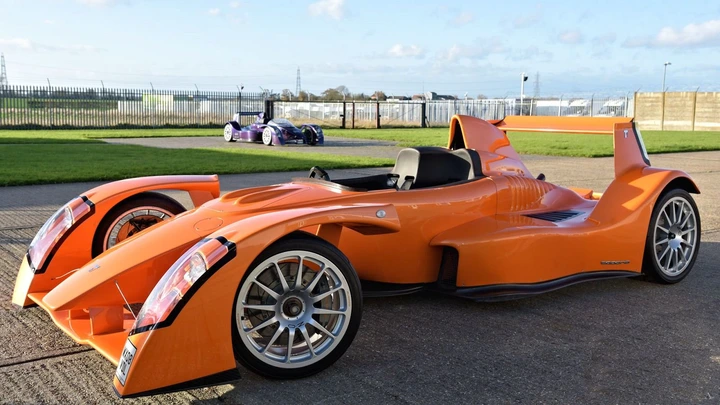
View pictures in App save up to 80% data.
Caparo T1发动机规格
| Manufacturer |
Menard Competition Technologies |
| Displacement |
3.5-liter |
| Configuration |
Naturally Aspirated V8 |
| Power |
575 hp |
| Torque |
310 lb-ft |
| Redline |
12,000 rpm |
| Transmission |
6-speed Sequential manual |
| Drivetrain |
Rear-Wheel-Drive |
| 0-62 MPH |
2.5 seconds |
| Top Speed |
200 mph |
Source: Caparo Vehicle Technologies
The Caparo T1 boasts the second highest-revving engine, trailing only the GMA T.50. Its impressive 3.5-liter naturally aspirated V8 can reach up to 12,000 rpm. This V8 engine, originally based on Formula 3 technology, has been adapted for road use. It features an aluminum block and heads, with a compression ratio of 12.0:1. Caparo asserts that this engine is finely tuned to deliver 575 hp at an astonishing 10,500 rpm, along with a torque of 310 lb-ft at 9,000 rpm.
The T1 weighed just 1,030 lbs dry, resulting in a power-to-weight ratio of over 1,000 hp per ton. With the 6-speed sequential manual transmission, also built by Xtrac, the Caparo T1 can reach 0-60 mph in 2.5 seconds and a top speed of 200 mph. Like the GMA T.50, the Caparo also had ultra-quick throttle response, designed to mimic Formula 1 characteristics.
However, the Caparo T1 was largely designed for track use, which was partially road-legal as well. Only 20 examples of the Caparo T1 were manufactured between 2007-2012, which sold for ~£235,000 (~US$288,891) at launch. The T1 was extreme and required high levels of skill to drive and handle at the limit. Additionally, it was prone to poor reliability as it was plagued with heat management issues. Regardless, the Caparo T1 remains an icon for its uncompromising design, offering a driving experience as close to Formula 1 as a road car can achieve.
2:03
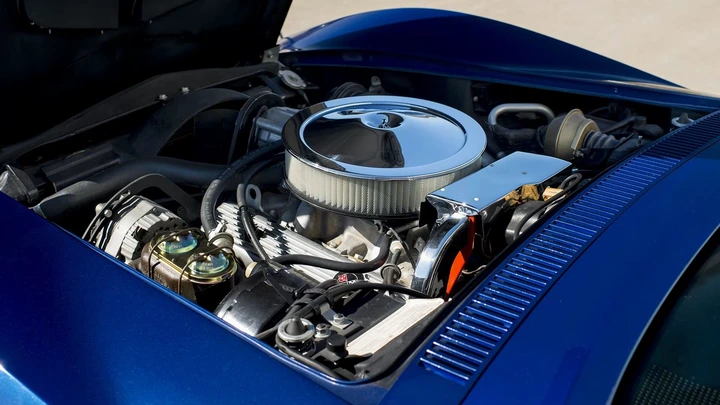
View pictures in App save up to 80% data.
Small-block V8 engines provided a powerful, efficient, and lighter option compared to big-blocks, making them perfect for muscle cars. Here’s the one that revs the highest.
The Kawasaki Ninja ZX 25R Holds the Title for the Quickest Revving Motorcycle
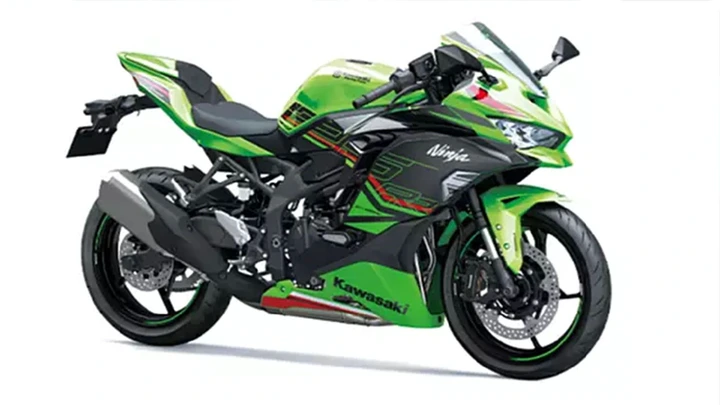
View pictures in App save up to 80% data.
Kawasaki Ninja ZX-25R发动机规格
| Make |
Kawasaki |
| Displacement |
249cc |
| Configuration |
Liquid-Cooled Inline-4 |
| Power |
50 hp at 15,500 rpm |
| Torque |
16.9 lb-ft at 14,500 rpm |
| Redline |
17,000 rpm |
| Transmission |
6-speed with Slipper Clutch |
| Top Speed |
118 mph |
Origin: Kawasaki
When discussing engines that reach impressive RPMs, motorcycles often take the lead. For instance, the Yamaha R6 features a 599cc engine that can rev up to an impressive 16,000 rpm. Yet, the Kawasaki Ninja ZX25R surpasses this figure. The Ninja ZX-25R is recognized for having the highest-revving production motorcycle engine globally, with its 249cc engine boasting a redline of 17,000 rpm and a maximum rev limit of 17,500 rpm.
The 249cc engine in the Ninja ZX 25R is a liquid-cooled, 4-stroke, DOHC Inline-4 with individual throttle bodies and electronic fuel injection. The ZX 25R also uses a high-performance exhaust system for smooth airflow and optimized power delivery. As a result, the Japanese motorcycle produces 50 hp at 15,500 rpm with a RAM air intake, and 16.9 lb-ft at 14,500 rpm, running an 11.5:1 compression ratio.
The Ninja ZX 25R boasts a top speed of 118 mph and weighs just 401 lbs. The four-cylinder engine is mated to a 6-speed manual gearbox with an assist and slipper clutch, with a quick shifter as standard. The motorcycle uses a lightweight trellis frame for agility and cornering precision on the road as well as track use. The Ninja uses 37mm USD Showa SFF-BP forks at the front and a horizontal backlink mono-shock for the rear suspension. For stopping power, the ZX 25R packs a single 310mm disc with a radial-mount 4-piston caliper for the front brakes and a 220mm disc with a single-piston caliper for the rear. From the factory, the Ninja is equipped with sport-focused Dunlop GPR-300 tires as standard. Furthermore, the Ninja is equipped with traction control, ride modes, and ABS as standard.
Most motorcycles that have 250cc capacity engines are generally single-cylinder or parallel-twin by design. The Kawasaki Ninja ZX 25R is unique as it uses an inline-four instead. The model was introduced in 2020, with a key focus on the Asian as well as the Middle Eastern market. The Ninja ZX 25R is primarily designed to be a beginner-friendly motorcycle, but also great for on-track performance.







